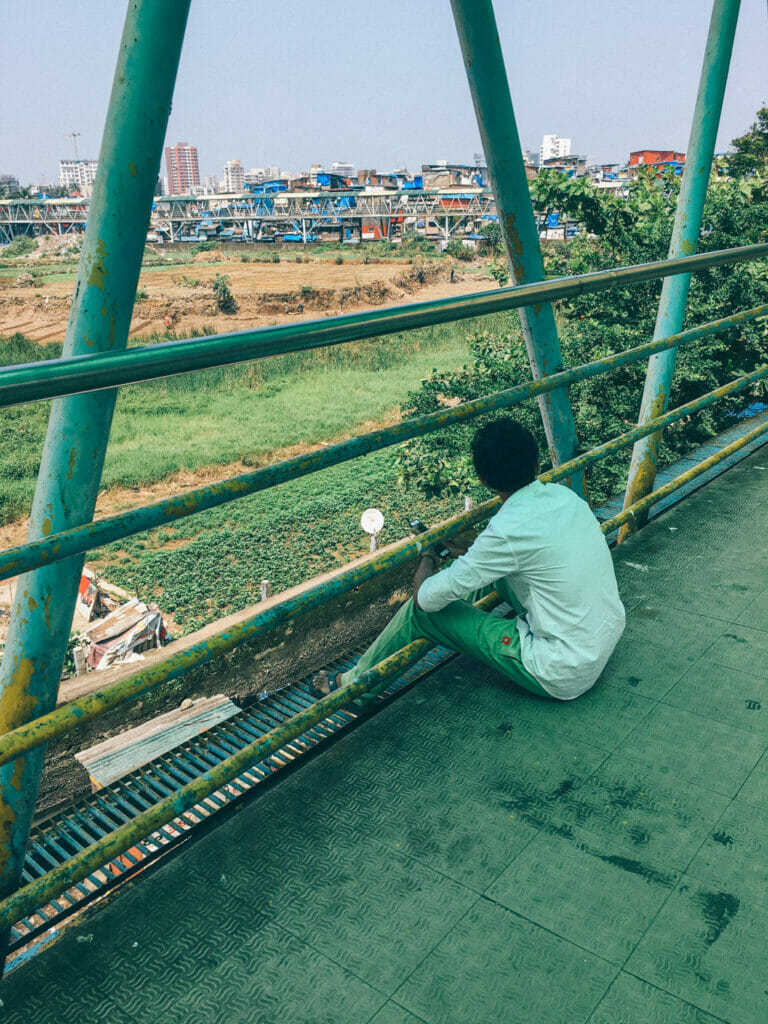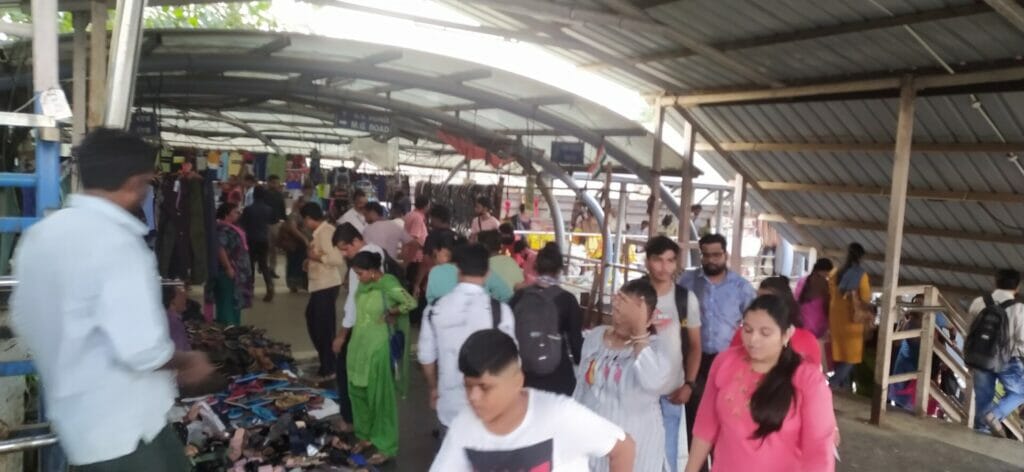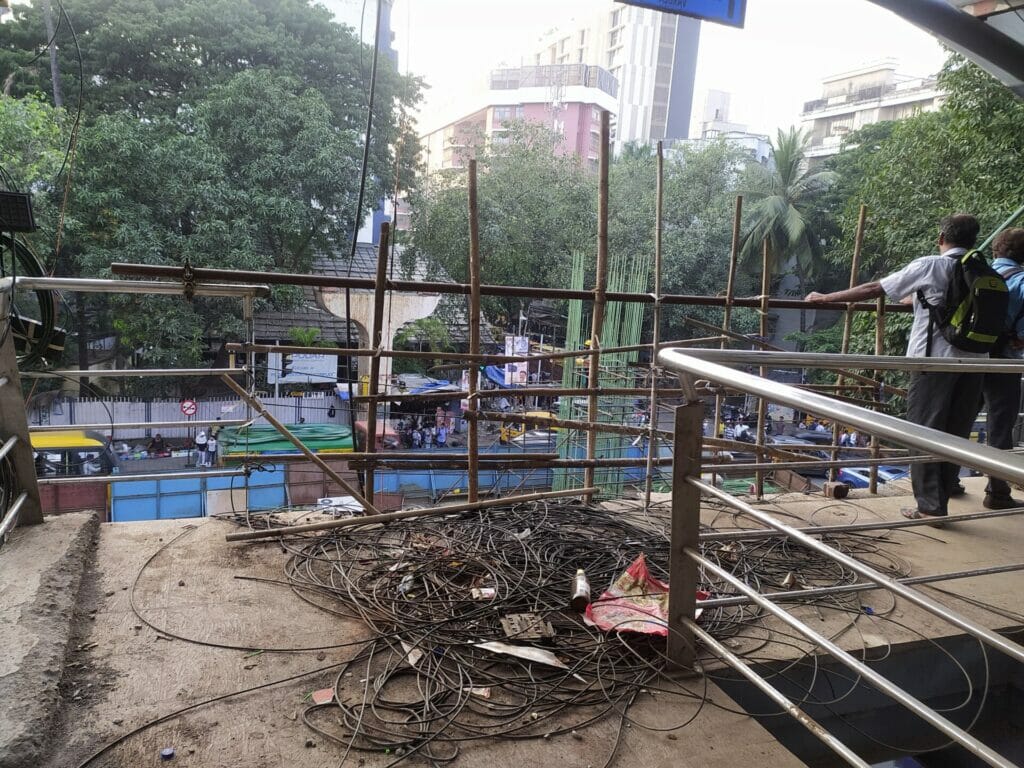As proposals of building new skywalks in the city meet with stiff public opposition, Mumbai faces the dilemma of whether to continue building skywalks or to gradually phase them out.
Skywalks are elevated pedestrian walkways connecting various heavily targeted destinations either to railway stations or to other high-concentration commercial areas. The purpose of the skywalks is the efficient dispersal of commuters from congested areas to strategic locations, such as bus stations, taxi stands, shopping areas, etc, according to the MMRDA website.
But opinions are divided on whether skywalks as an infrastructure project are useful or not. While the government is convinced that they are, most elected representatives seem to oppose it. Urban planners suggest a middle path – to rework skywalks to make them more people-friendly.
How did skywalks come about in Mumbai?
Most of these skywalks were commissioned by the Mumbai Metropolitan Regional Development Authority (MMRDA) in 2007 as part of the Station Area Traffic Information Scheme (SATIS) project that aimed to decongest the passenger outflow from railway stations.
“The idea was to help railway commuters reach the nearest main road from the railway foot over bridge without having to step down to the road outside the station. This was meant to disperse the crowd to various arterial roads without overflowing at the main roads outside. The proposal was floated by the Maharashtra State Road Development Corporation (MSRDC) and was undertaken by us at the MMRDA in a big way. The skywalks were a huge success initially with the Bandra (E) and West registering a daily footfall of over two lakh people,” explains Ratnakar Gaikwad, former MMRDA commissioner, who led the skywalk project in Mumbai.

The MMRDA spent Rs 897 crores to build around 36 skywalks spanning 17 km in the entire Mumbai metropolitan region, including 20 skywalks in Mumbai city. This also includes funding for six skywalks built by the Maharashtra State Road Development Corporation (MSRDC), according to information provided by the MMRDA.
The MMRDA subsequently handed over all the skywalks completely to the BMC in April 2015. “Also, since the Maharashtra state government has, in principle, decided that the development and maintenance of infrastructure projects in Mumbai will be handled by the BMC, we will not be building any new skywalks in Mumbai,” explains an MMRDA official.
Bone of contention
The Brihanmumbai Municipal Corporation (BMC), however, had to cancel plans to build two skywalks in Kandivali (W) and Malad (E) following opposition led by the local elected representatives there.
In fact, the opposition to the Malad (E) skywalk was so strong that the BMC was forced to cancel it after the foundation had already been laid and piling layout work was being done.
Local Bharatiya Janata Party (BJP) legislator Atul Bhatkhalkar says that they raised their voices against the proposed Malad skywalk due to concerns raised by local residents about their privacy being invaded. Residents also said there was no need for such a skywalk there. “The road below is too narrow and hence the skywalk will only add to the congestion below. It has been planned without considering people’s views,” he explains.
However, Atul is unsure if Mumbai should continue with a blanket policy on skywalks. “There is nothing right or wrong about skywalks in general. The call on whether to oppose or not depends on individual projects,” he says.

Different projects, different concerns
Earlier, privacy concerns about pedestrians on skywalks peeping into drawing rooms had been raised by residents at Vile Parle (W) demanding that the skywalk be dismantled. However, the BMC put up view cutters in the form of tin sheds in a few parts to assuage the local residents’ opposition to it.
In the case of the Dahisar skywalk, which connects Dahisar railway station (W) to the nearby Vithal temple, the opposition to the skywalk is so high that there are demands to dismantle it completely. The local political leadership claims that it serves no purpose and has become a haven for anti-social activities.
Former Corporator Sheetal Mhatre, who lobbied strongly for this particular skywalk to be pulled down, complains that the nuisances, in the form of drug addicts and other objectionable elements, deter people from using the Dahisar skywalk, so much so that they prefer using the road below. The decision now lies pending with a special committee.
Some citizens like Herman Dias, a social activist from Mahim, term skywalks as a blatant waste of public funds. “When you build footpaths, which is a mandatory provision along with any road, why spend further funds for skywalks and get people to climb up? All that the authorities need to do is simply ensure an encroachment-free footpath, to allow people to walk comfortably and safely. Why is that so difficult to provide?” asks Herman, who as convenor of the Mahim (W) Skywalk protest committee, got authorities to cancel a skywalk at Mahim.
He suggests skywalks be built, only where it involves crossing over highways or unsafe busy streets, lacking walking spaces that could be risky for lives or limbs. Pedestrians account for 47% of road accident casualties in Mumbai.
Read more: Last mile connectivity still a problem for Mumbaikars
Quality of the skywalks raises questions
The quality of most of the 24 skywalks in the city has also raised questions. Most of the skywalks have been refurbished following a structural audit in 2019 that cited structural decay recommending urgent repairs.

The en masse structural audit undertaken in the wake of the collapse of the Himalayan Bridge at Fort in March 2019, killing seven people and injuring over 31, revealed that its pillars on the stilt had rusted.
The quality of one of them, the 1.3 km long Bandra (E) skywalk built at the cost of Rs 13 crore, was found structurally unsafe in the audit within 11 years of its being built in 2008. So much so that it was recommended to be pulled down completely. As things would have it, a part of the skywalk broke down recently on October 10, 2022, fortunately injuring no one, since it was already shut down for pedestrians. The BMC now plans to reconstruct one arm of the skywalk between Bandra station and to court at the cost of Rs 19 crore, which it claims would have a shelf life of 40 years.
Another 21 crores have been sanctioned in 2021 to repair five skywalks of Borivali (W) and Dahisar (West and East), Goregaon and Kandivali (E).

So, where should the project skywalk go from here?
Transportation analysts like Sudhir Badami feel that pedestrian facilities like skywalks do have a major role to play in a city like Mumbai where almost half the population walks to work without taking any form of motorised transportation.
Read more: Interview with Sudhir Badami: How transport in Mumbai is evolving
“Skywalks are important considering that 51% of total trips are made by walking without using any motorised form of transport, as per the Comprehensive Mobility Plan. Also, 60% of public transport trips start and end as walking trips,” is how he outlines their relevance.
“While there are those who prefer to shop as they step out of the railway station, there are still many others who would rather walk straight without any hurdles of hawkers. Skywalks have failed to connect at places mainly due to design flaws, clearly a result of lack of planning or thinking through projects or simply failure to take cognisance of people’s needs. This needs to be tweaked and corrected to factor in commuter convenience,” Sudhir suggests.
Skywalker are a waste of public money. It’s a haven for anti elements . Senior citizens can never use the Skywalk as it makes it difficult to climb up and get down. Skywalk are hardly used and always seen isolated.